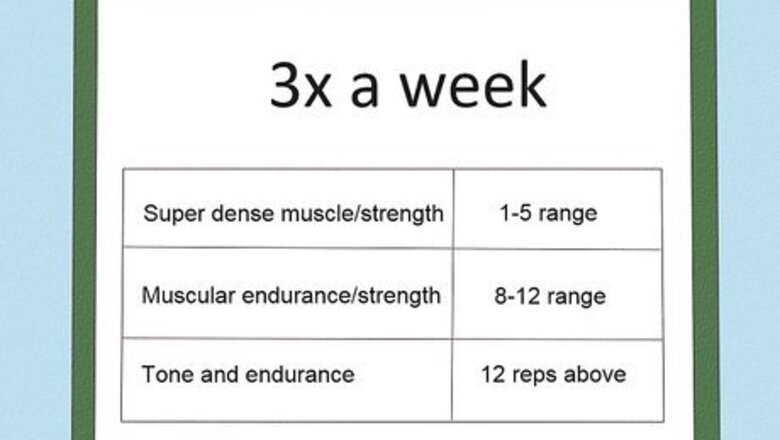
views
Getting Ready to Train
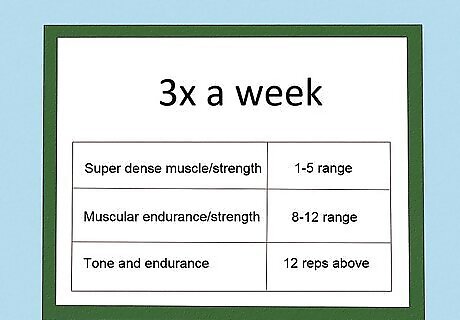
Choose a routine. Progress is the result of having a game plan and sticking to it. For a beginner, it’s advised to choose a full body routine that you do three times a week with a full day of rest in between. The amount of sets and reps that you do in your routine effects the end result to your body. To build super dense muscle and strength, do reps in the 1-5 range. To build equal amounts of muscular endurance and muscular strength, do reps in the 8-12 range. To build tone and endurance, do 12 reps and above.
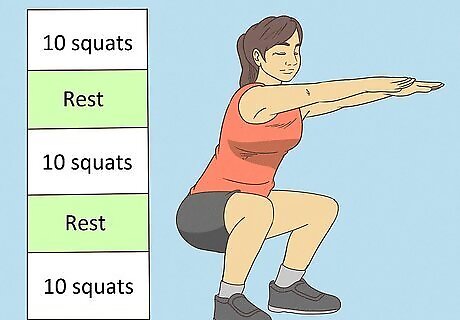
Optimize your progress as a beginner in weight training. Most strength programs that strive to do this have you doing 5 sets of 5 reps. To get stronger and put on muscle, do workout routines that have a traditional strength style workout. Traditional strength style workouts mean you complete one set of an exercise, rest, and then another set of the exercise, and then rest. For example, 3 sets of 10 squats would be: 10 squats, rest, 10 squats, rest, 10 squats, rest.

Eat a quality diet with plenty of water. How you eat is 80-90% of your success in weight training. If you're trying to burn fat at the same time, you'll want to be careful to consume just enough calories to give you energy to make progress weight training. This can take some trial and error. Don't be scared to eat more if you feel fatigued or are not making progress. Focus on eating protein and vegetables as the bulk of your diet.
Starting Your Weight Training Program
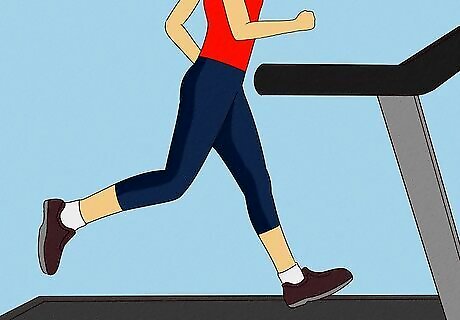
Warm your body up with cardio. Starting your weight training workout by doing some cardio is a great way to make sure your body is warm enough to perform some of the moves better. Do some cardio with a light jog on the treadmill or outside and stop when you are just starting to break a sweat. Follow up with some stretches before you weight lift.
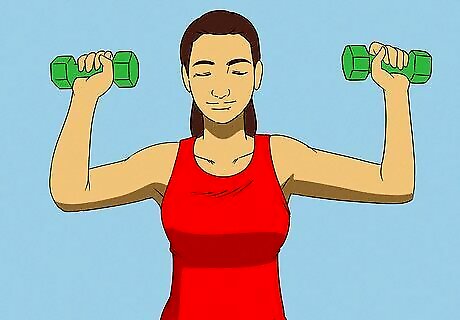
Find dumbbells that are light enough for you. When you are first starting your training, it’s important not to push yourself too hard. The size weights you lift in the beginning should be light enough that you can perform 2-3 sets of 12-15 reps. Stay away from the “go hard” mentality in the early days of training. Your muscles shouldn’t be pushed to the maximum early on. During your first workout in the gym, do 2-3 sets of 12-15 reps with the weights. You should feel a burn, but not to the point of exhaustion where you can’t push yourself any further during your reps. After the first 10-12 reps, there should be 2-5 reps left “in the tank” that you could perform after each set if you wanted to.
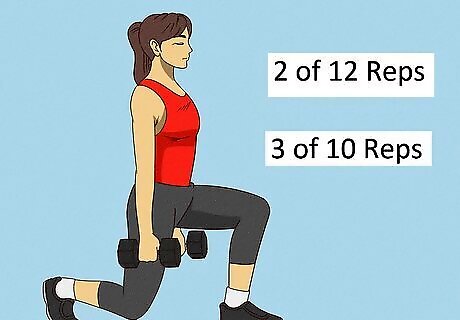
Perform dumbbell exercises in a pattern. Doing weight training exercises in a pattern with reps between 2 of 12 and 3 of 10 helps you process the motions as their happening to your body. Muscles will also be able to learn to adapt to the weight you’re placing on them.
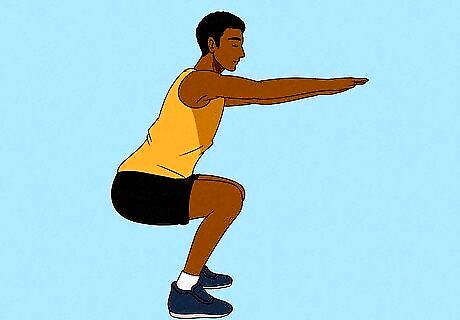
Use your bodyweight when first learning to squat. Barbell squats are a very common way to weight train, but it’s best to start light so that your body can get accustomed to the technique. As you get stronger, incorporate dumbbells and then barbells. Squat by standing with feet slightly wider than your hips and toes pointed slightly outward at a 5-20 degree angle. Look in front of you and find a spot on the wall to concentrate on as you squat down. Put your arms outward in front of you, in line with the ground. Proper technique will help prevent injury. Your spine should be in neutral position and kept straight as you lower into form. Make sure that your knees do not go beyond your toes. Do 5 sets of 5 squats or 25 squats total. When you start to feel gains from your workouts, incorporate dumbbells instead of just your bodyweight. Week by week, you should be able to increase your weights by 2-5 percent. EXPERT TIP Laila Ajani Laila Ajani Fitness Trainer Laila Ajani is a Fitness Trainer and founder of Push Personal Fitness, a personal training organization based in the San Francisco Bay Area. With over 10 years as a trainer and exercise specialist, Laila has expertise in competitive athletics (gymnastics, powerlifting, and tennis), personal training, distance running, and Olympic lifting. Laila is certified by the National Strength & Conditioning Association (NSCA), USA Powerlifting (USAPL), and she is a Corrective Exercise Specialist (CES). Laila Ajani Laila Ajani Fitness Trainer Once you are proficient with bodyweight squats, take squat exercises to the next level by adding weights. Start with an empty bar and increase the weight until you find a challenging set of five reps. Advanced trainers aim to squat with weights equal to or greater than their body weight.
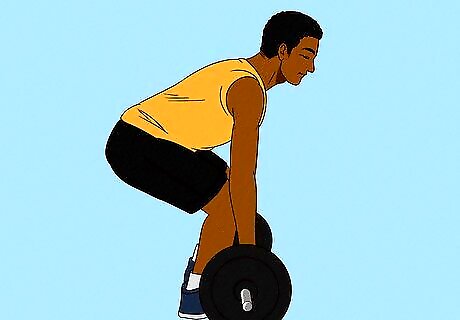
Focus on proper form. Squats and deadlifts are more complicated than bicep curls. When squatting, if you find that your form begins to suffer during the last few reps, try to perform fewer reps per set. It’s your body’s way of telling you it’s reached its limit. Work your way up to higher reps as you continue to train. Give yourself 1-2 minutes in between rep sets to make sure you are maintaining proper form while you exercise. Lighten your weight if you feel yourself struggling. Focusing on your form is a part of teaching your body proper technique. The earlier you do so, the better your weight training journey will be.
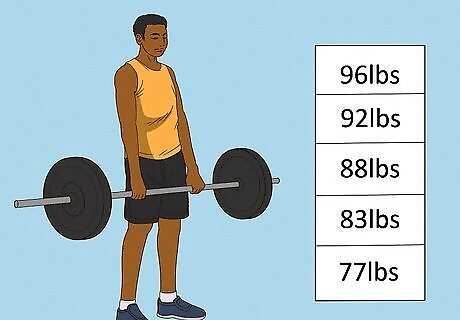
Be consistent with your training. Weight training works by progressively increasing the amount of weight that you move with your body. If you're inconsistent, you'll find that your progress stalls. Progress is something that happens over time. Make weight training a lifetime habit in order to see results gradually, all the time.
Increasing How Much Weight You Lift
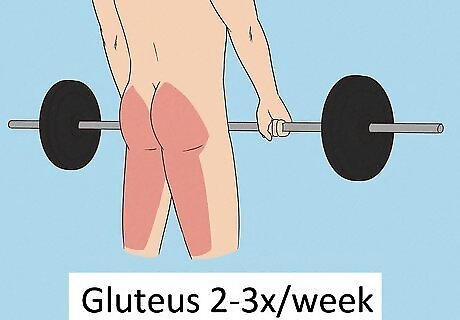
Cut back on exercises that might be working a certain area too hard. You might find that you have reached a plateau in your gains, but would like to be able to lift more weight and increase your overall strength. What you might be experiencing is overtraining of certain muscles. Choose a muscle group that is central to your workout 2-3 times a week. Cut back on that muscle group to being worked out only once a week. Do that for 2 weeks. By doing this, you should be able to increase the amount of weights you lift by giving those muscles some breathing room to experience the gains.
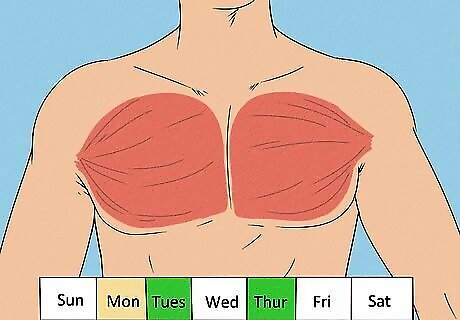
Switch the types of exercises you’re doing. When your body and muscles get too accustomed to doing the same exercises at the same rate on a routine basis, you will stop progressing in your workouts. Shock your body and wake your muscles up by changing your routine and/or lifting schedule. For example, if you work on your chest on Mondays, choose to do those workouts on a Tuesday or Thursday. Apply that format to all of your exercises and change things up every week. If you do that for a month, you should slowly be able to increase your weight again. Seeing improvement in your strength and body will follow.

Enhance your strength and power by changing your fuel. A lot of weightlifters rely on additional fuel to help them bulk up and increase their strength as they work out. Give your body the proper fuel by using trial and error to see what works best for you. After workouts, protein should be a staple in your dietary plan. Muscle building gets an extra boost with the regular consumption of a protein and carbohydrate combination post-workouts. Try consuming an 8 ounce glass of chocolate milk after a workout to help rebuild muscles, prevent muscle damage, and supply the body with a great source of protein. Foods like omega-3 eggs used to have a bad name due to its believed link to clogged arteries, but is actually great fuel for building muscle. An ounce of almonds or walnuts are great for anyone struggling to build muscle. It is a perfect blend of fiber, protein, and fats that gives all the benefits of calories without the expanding waistline.
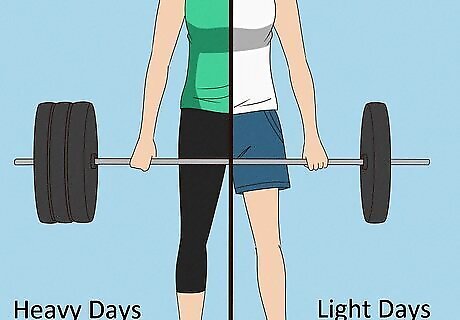
Give your workouts balance. Increasing how much weight you weight lift will be challenging if you have a workout routine that favors certain muscle groups (biceps vs triceps, glutes vs legs). Vary your routine by increasing the number of sets or repetitions. Alternatively, you can also increase the weight you use and cut back on the number of sets and/or reps you do. You can vary your routine and bring balance to your workouts by switching between “heavy” days and “light” days. Heavy days would be the days designated for heavier weight with fewer reps and more sets. Light days will be your default weight lifting routine. Condition muscles that have the same power capability the same to ensure that your routine is always balanced properly. For example, your chest and back should handle the same amount of weight. Then you can increase weights over time. EXPERT TIP Laila Ajani Laila Ajani Fitness Trainer Laila Ajani is a Fitness Trainer and founder of Push Personal Fitness, a personal training organization based in the San Francisco Bay Area. With over 10 years as a trainer and exercise specialist, Laila has expertise in competitive athletics (gymnastics, powerlifting, and tennis), personal training, distance running, and Olympic lifting. Laila is certified by the National Strength & Conditioning Association (NSCA), USA Powerlifting (USAPL), and she is a Corrective Exercise Specialist (CES). Laila Ajani Laila Ajani Fitness Trainer Gradually increasing the weights you lift in the gym will help keep you motivated. For each exercise, start with a weight you can handle for three sets of 4-8 reps, then increase the weight for the next workout while keeping the same routine. People become addicted to strength training because they enjoy tracking their progress and seeing their numbers increase.

















Comments
0 comment